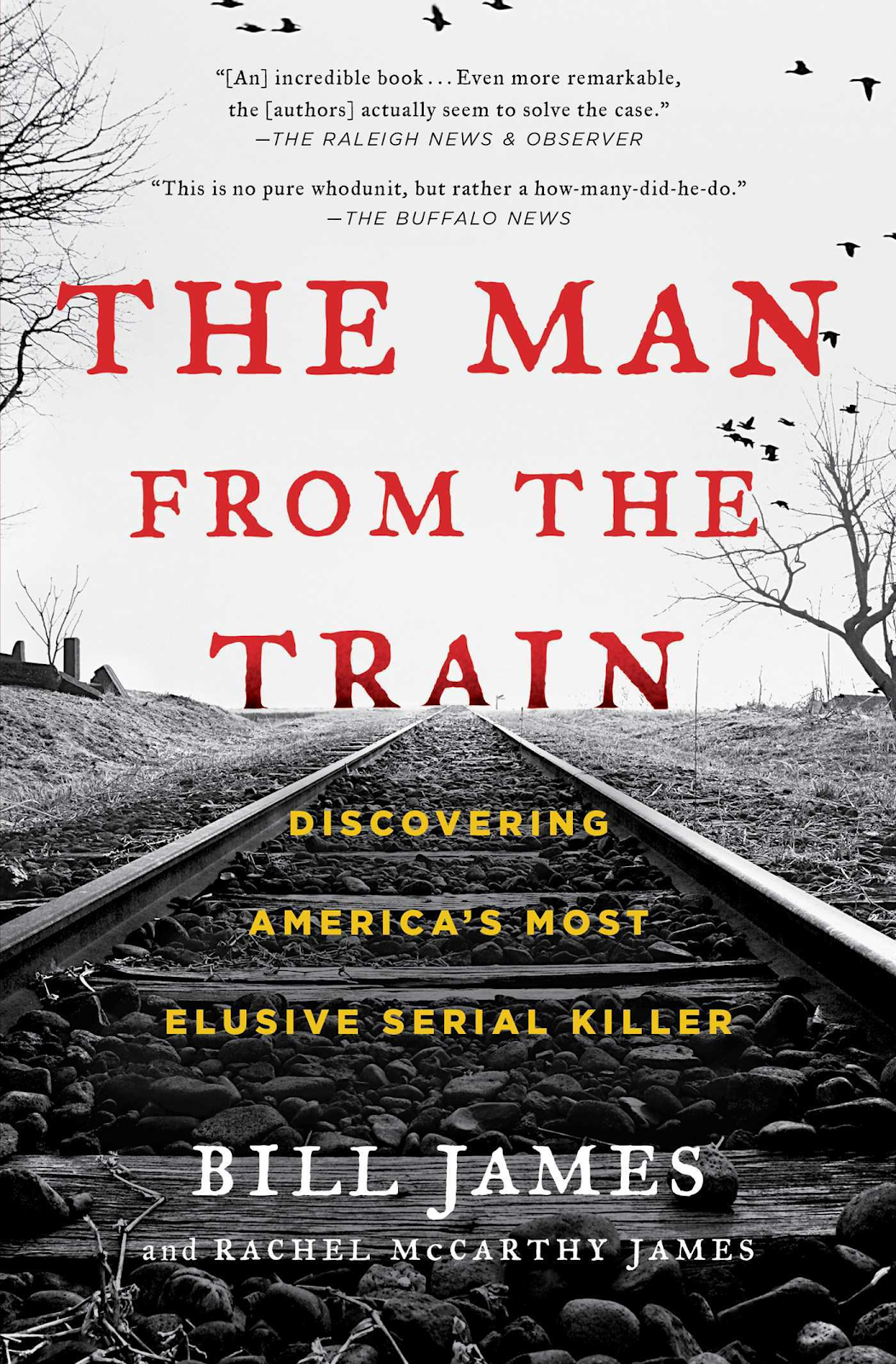The Man from the Train: Discovering America's Most Elusive Serial Killer by Bill James and Rachel McCarthy James
“A suspenseful historical account” (Publishers Weekly, starred review), The Man from the Train paints a vivid, psychologically perceptive portrait of America at the dawn of the twentieth century, when crime was regarded as a local problem, and opportunistic private detectives exploited a dysfunctional judicial system. James shows how these cultural factors enabled such an unspeakable series of crimes to occur, and his groundbreaking approach to true crime will convince skeptics, amaze aficionados, and change the way we view criminal history. “A beautifully written and extraordinarily researched narrative…This is no pure whodunit, but rather a how-many-did-he-do” (Buffalo News).
Review: At the turn of the twentieth century, a man used America's railroad system to crisscross across the country, hopping off in remote areas to sneak into homes and kill whole families in their sleep using an axe. In a time before advanced investigations, state or national networks for tracing crimes, or forensics, he was able to get away with these murders for years. Few ever realized the crimes were likely related to a single killer. In this book, author Bill James, along with his researcher daughter Rachel, sift through thousands of local papers and public records to pinpoint the crimes most likely carried out by the serial killer they refer to as the Man from the Train.
The authors systematically go through each crime scene that they believe to be linked to this single killer. It is quickly apparent why they believe they are linked, as each scene shares an overwhelming number of characteristics. They are all located close to a railroad station, and most are within logging towns. They almost always happened around midnight and the killer would break in through a window when everyone was asleep, typically killing the father first and then the rest of the family, almost always with the blunt side of the axe. Typically, the victims' heads were covered with clothing and all the windows and shades were tightly drawn. The house would be locked tight before the killer left and sometimes lit on fire. The killer had a sexual preoccupation with prepubescent females, which were frequently among the victims.
Like many other readers, I was somewhat put off by the author's almost dad joke writing style. I believe he's trying to add levity to an extremely dark topic, but it just felt wrong for a serious research text. For instance, in a chapter about a family named Pfanschmidt that was murdered, the author writes "At the time that the Schmidt hit the Pfan." It just felt corny and borderline disrespectful to the victims. While most of the book is written in the voice of Bill James, there is at least one chapter that is written from author Rachel McCarthy James' perspective. There is no indication of this switch and it felt abrupt. In short, something an editor could have introduced more smoothly. Finally, I was surprised to not find any citations or sources listed. The authors reference their exhaustive research and pouring over different newspapers and firsthand accounts but the absence of any sort of sources reduces the scholarly credibility of this work, which I really hate as I loved the book!
I am amazed that the authors were able to uncover as much as they did about crimes that happened over one hundred years ago. They seem to have solved mysterious deaths that stumped the nation at the time that they occurred. This book was fascinating in a very horrifying way. I think it could have used a heavier hand in the editing process but otherwise, I was thoroughly enjoyed reading about the methodical investigation the authors carried out to help solve these crimes.
The authors believe that this serial killer could have killed as many as 100 people and provide methodical rationale and explanations for why they believe this to be true. In today's world, this killer could not get away with these murders. With cameras, a national investigation process, finger printing, and more, he would be caught quickly. But tragically for his victims in the early 1900s, he was able to anonymously slide away into the darkness and move on to another town and another household of sleeping victims. I was amazed that the authors even pinpointed a very likely identity for the killer. While it was frustrating that many details about the proposed perpetrator are lost to time, it does give some closure to these horrific crimes and is stellar journalistic research.
Stars: 4
Related Title:



Comments
Post a Comment